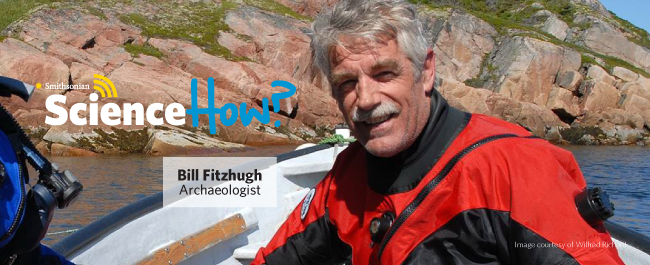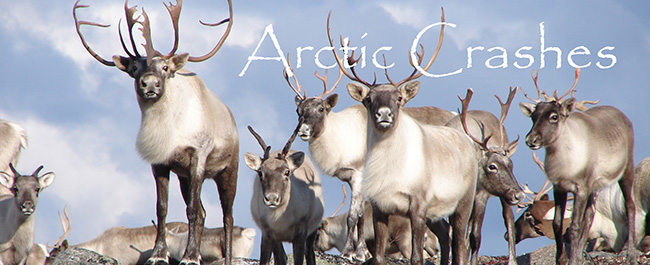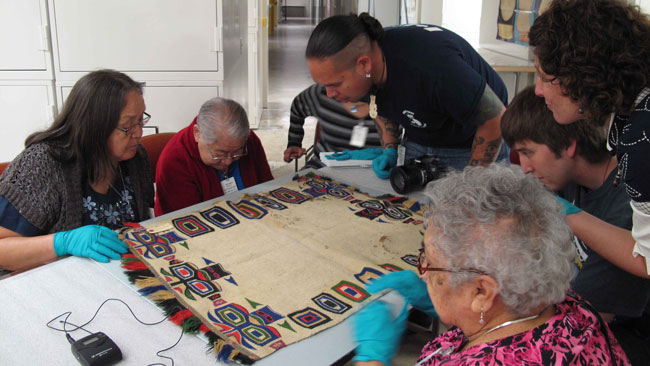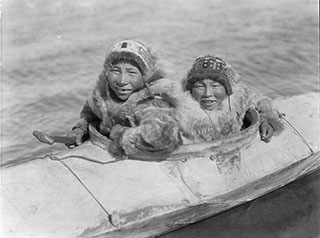| VIEW THIS EMAIL IN YOUR BROWSER > |
|
|
 |
|
 |

Tromso, Norway, from the Nature's Best Photography exhibition. Image Credit: Audun Rikardsen. |
Nature's Best Photography: Best of the Best
|
Online Exhibition - Alaska Native Collections: Sharing Knowledge |
Enjoy 20 years of nature's finest moments in the "Best of the Best" photo exhibition. 100 images were selected from nearly 500,000 submitted by photographers from around the globe. 2nd Floor.
More >
|
Explore Smithsonian collections with Native tradition bearers and learn about the peoples of this northern world.
Alaska Native collections online >
|
| MORE EXHIBITS > |
 |

Image Credit: PBS NOVA.
|
| NOVA Series Premiere: Making North America |
Smithsonian Senate of Scientists' Lightning Talks |
Wednesday, November 4, 9 p.m.
Your local PBS station, NOVA
How was our continent built? How did life evolve here? How did the landscape shape us? Join the Museum's Sant Director, paleontologist Kirk Johnson, as he embarks on an epic road trip to uncover the clues just beneath our feet in a new, three-part series, Making North America.
Series airs November 4, 11 and 18 >
|
Friday, November 6, 10:30 a.m.-12 noon
Join us for eight rapid-fire presentations from a diverse group of speakers from the National Museum of Natural History, who will introduce their research. Two sessions, each with four talks, will be followed by a short panel discussion, including questions from the audience.
See the schedule of presentations >
|
| HOT (Human Origins Today) Topic: Exploring the Meanings of Human Evolution |
Evening Lecture: Conservation for Cities |
Friday, November 20, 4-5 p.m.
Join our conversation and explore the meanings of human evolution with Jim Miller, co-chair of the Smithsonian Institution's Broader Social Impacts Committee and President of the Presbyterian Association on Science, Technology and the Christian Faith, and Rick Potts, curator of the Hall of Human Origins.
Learn more >
|
Thursday, December 3, 6:15 p.m.
By 2050 the world’s urban population will swell by almost 3 billion. Senior Scientist for Sustainability at the Nature Conservancy, Rob McDonald, presents stories of cities around the world where city planners, economists and ecologists have overcome challenges, highlighting the new science that is providing hope for cities in the future.
RSVP for this event >
|
| MORE EVENTS > |
 |

Image Credit: Wilfred Richard.
|
| Smithsonian Science How: Culture and Climate Change in the Arctic |
Upcoming Educational Programs |
Free Live Webcasts: November 5, 11 a.m. & 2 p.m. EST
Meet Dr. Bill Fitzhugh, an archaeologist at the National Museum of Natural History. Find out what the Arctic is really like and how people have adapted to its unique conditions for thousands of years. Take a journey back to about 6,000 years ago when the first people lived on the Canadian island of Labrador. See how they responded to changing climate over time. Join Bill in reflecting on how future changes may affect Arctic people.
Watch a video preview and register >
View the 2015 - 2016 webcast schedule >
|
November 17, 2-4 p.m.
Expert Is In: Colors in Ancient Mesopotamia
November 17, 5-6 p.m.
Lecture: An Ancient Egyptian Architect's Afterlife - New Research at the Egyptian Museum in Turin
November 19, 12-2 p.m.
The Human Origins Scientist Is In
November 21, 11 a.m.-1 p.m.
Genome Geek Is In: William & Mary iGEM Team
Visit our calendar on the Q?rius website >
|
| MORE EDUCATIONAL PROGRAMS > |
 |

Image Credit: Arctic Studies Center, Smithsonian Institution.
|
| Website: Arctic Crashes |
Paper: Warming May Shrink Range of Heat-Loving Lizard |
In an ongoing collaborative study of polar animal fluctuations, anthropologists team with biologists, environmental historians, and indigenous knowledge experts to study fluctuations of major wildlife species from a variety of viewpoints.
Learn more >
|
A resilient reptile that has persisted in the hottest and driest places in North America for tens of thousands of years, the desert horned lizard may face a challenge as temperatures reach new highs. Daniel Mulcahy, a herpetologist at the National Museum of Natural History, co-authored a new paper in the journal Ecography, which examines 21,000 years of the lizard's history.
Read more > |
| MORE RESEARCH > |
 |

Image Credit: Smithsonian Institution. |
| Support the Museum |
Volunteer Opportunities |
The Museum's research, outreach, and collections depend on the generosity of people like you. Your donation will support Recovering Voices’ mission to address issues of endangered languages and knowledge at the national and global level.
Make a gift today >
Pictured above: a group of Bella Coola and Bella Bella scholars and artists from the Northwest Coast of Canada work alongside the Recovering Voices
team to study textiles from their communities.
|
Share your craving for culture, fascination with fossils, or passion for plants! A variety of opportunities are available at the Museum, either working with the public or behind-the-scenes.
Learn about volunteer opportunities
and benefits >
|
| MORE WAYS TO GET INVOLVED > |
 |
BANNER IMAGE:
Two Nunivak boys traveling by kayak. Image Credit: Edward S. Curtis, 1927. National Anthropological Archives, #2010-28_AK620nn, Smithsonian Institution.
Visit the National Anthropological Archives website >
|
|
|
| © 2015 Smithsonian's National Museum of Natural History
10th St. and Constitution Ave., NW | Washington, DC 20013 |
CHANGE EMAIL PREFERENCES > |
|


